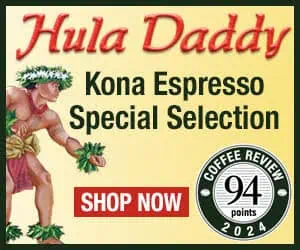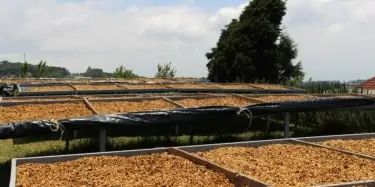For many North Americans, the classic coffees of Central America constitute the essential experience of fine coffee. Until relatively recently, wet-processed or washed coffees from traditional tree varieties produced by a string of Central American countries — Guatemala, Nicaragua, El Salvador, Costa Rica, Honduras, Panama – typically appeared near the top of specialty coffee menus. But that
Tasting Reports – Americas
Coffee Review has published more than 250 monthly coffee tasting reports since February 1997. The tasting reports below -- focusing on coffees from Central America, South America, and Hawaii -- appear in reverse chronological order. You may refine your search by using the key word search feature that appears in the page header. The content in tasting reports and associated reviews was correct at the time of publication but may not remain accurate over time.
Mexico Coffee: Processing Innovation, Cooperatives, and the Tradition of Collaboration
While Mexico is somewhat under the radar when compared to more popular coffee origins, the country has been producing coffee since the late 18th century, and given recent developments, may well be poised to become a model for coffee production in the 21st century. In this month’s report, we review nine exceptional coffees from four different Mexican growing regions. Coffee farmers
Brazil Naturals: Tradition and Innovation
When I first opened a specialty café in Berkeley, California 40 years ago, a Brazil always appeared among the standard whole-bean coffee offerings in the 10 or so glass-fronted bins that held our whole-bean coffees. All of the popular and glamorous coffee origins of the time were there: Guatemala Antigua, Kenya AA, Costa Rica Tarrazu, Sumatra Mandheling, Colombia Supremo, and the new,
Tradition, Diversity & Measured Innovation Elevate Guatemala Coffees
While some people in the specialty coffee industry still refer to the “classic Central America cup,” effectively lumping together the diverse coffee-producing countries of Guatemala, Honduras, Nicaragua, El Salvador and Costa Rica, it is more the trend now to make increasingly fine distinctions among these origins in terms of varieties, processing, and cup profiles specific to each. Single-origin
Colombia Coffee 2021: Best of Both Worlds or Identity Crisis?
Colombia could be approaching best-of-both-worlds status as coffee producer. On one hand, standard commodity Colombias continue rolling down to the ports and onward into “100% Colombian” supermarket cans and jars, whose quite decent contents put to shame the bland, woody, Robusta-laden contents of competing supermarket cans and jars. At the same time, small lots of specialty Colombia
The Fate of a Classic: Washed Central America Coffees
For decades, the classic washed or wet-processed coffees of Central America and Mexico have constituted one of the world’s great go-to coffee types. Usually clean-tasting, usually sweetly-tart, with a shifting array of fruit notes – always stone fruit, typically some citrus and flowers, always notes ranging from nut and caramel to full-on dark chocolate depending on the coffee and roast. And most
El Salvador Coffees 2019: Pacamaras, Bourbons and Change
When we focus a report on a single origin, in this case El Salvador, we try to time the report so that we are testing mainly freshly arrived coffees, coffees that represent the best of the year’s new crop. This year, however, we were a bit too early with our report timing. Many of the coffees we cupped early in July lacked vivacity and aromatic range, suggesting perhaps that they were last year’s
Hawai’i: A New Wave of Coffee Innovation
The Hawaiian Islands are known the world over for beautiful beaches, diverse microclimates, and both active and dormant volcanoes — pretty much paradise, as the cliché goes. Hawaiian culture is both uniquely American and, in many ways, happily incongruous with mainstream American culture. One island in particular, Hawai'i Island (often called the Big Island), produces the famous, widely
Revisiting the Andes: Coffees From Peru, Ecuador and Bolivia
The three coffee-growing countries that range along the Andes south of Colombia — Ecuador, Peru and Bolivia — have rich and storied coffee histories. When Coffee Review last dove in to this region, with reports in 2010 and 2013, we found many impressively solid, softly balanced coffees in the Latin-American tradition — all produced from classic tree varieties like Typica and Caturra and processed
Coffees from Brazil: Chocolate, Simplicity and Some Surprises
For more than 150 years, Brazil has produced more coffee than any other country in the world. Coffee prices worldwide fall and rise on the slightest whisper of good news or bad news about Brazil’s next coffee crop. Brazil also is among the world’s most technologically advanced coffee producers. Nevertheless, for buyers of high-end single-origin coffees, Brazil shrinks to something smaller than,
Costa Rica 2016: Innovation and Success in a Changing Market
It has been more than a decade since Coffee Review explored Costa Rica coffees in depth, though we cup many individual samples each year from this small, coffee-celebrated Central American country. In the last year alone, we reviewed 26 Costa Rica coffees at ratings of 91 to 96, including one, Temple Coffee’s Costa Rica Alberto Guardia Venecia Honey (94), which landed at the #17 spot on our 2015
Brazil Naturals: Tradition Meets Trend
Although Coffee Review has published a number of articles over the years focusing on coffees from Brazil, we have never specifically focused on the coffee type generally called “Brazil naturals”: Brazil coffees of the Arabica species that have been dried inside the fruit rather than after the fruit has been removed (as is the case with conventional “washed” or wet-processed coffees). Brazil
Traditional Coffees of Central America: Quest for the Classic
We’ve seen two conflicting, yet overlapping, trends at the growing end of specialty coffee over the past decade. On one hand, greater and greater homogeneity. Traditional coffee tree varieties, varieties that may not taste unique, but do taste subtly different, are being replaced by disease-resistant, higher-yielding varieties that incorporate robusta genes and, well, usually don’t taste different
Honey and Natural Process Coffees, Central America 2014
Nine years ago I organized a panel for the Specialty Coffee Association of America called “Using Alternative Processing Methods to Create Product Differentiation: Perspectives and Opportunities.” Presented in Spanish and English, it attracted around five hundred coffee producers and roasters. The overall premise of the panel was simple: coffee is no longer a commodity beverage but a specialty
Hawaii 2014: The Classics Rule
When writing about Hawaii coffees – more specifically, Kona coffees – I invariably feel conflicting impulses about whom to take on. Should I attack the many cynical Kona-bashers among the mainland high-end coffee-roasting community who sneer that Hawaii coffees (Kona in particular) are at best ordinary and always overpriced? On the other hand, should I rattle the bars of the sun-and-sand besotted
Colombia on the Rebound
When we last tested Colombias two years ago we turned up several fine coffees, but generally were disappointed by the many samples that arrived bearing fancy names but displaying little distinction in the cup. Back then the trend toward select, precisely identified lots of green coffee (aka “direct trade,”“microlots”) seemed to have been honored more in name and hype than in distinction and
Subtle but Not Tame: Brazils 2014
The various cup profiles associated with the world’s coffee regions are the result of a complex interplay between nature and nurture, between the givens of nature – growing altitude, soil and rainfall patterns – and local traditions that for decades determined the varieties of coffee tree typically grown in a region and how the fruit was typically harvested and processed. The sum total of this
A Focus on the Classic: Coffees of Honduras
With this review of coffees from Honduras the excitement may reside more in the story than in the cup itself. The story is how this Central American nation, long considered mainly a source of low-to-decent quality, commercial-grade coffees, has stepped up over the past five years or so and is producing significantly better coffees and more of them. Of the eighteen Honduras coffees we were able to
The Andes Cup: Peru, Bolivia, Ecuador
For a couple of hours during the early preparation for this article I was haunted by the challenge to a coffee reviewer occasioned when it looks like perhaps a whole category of coffees produced by wonderful, hard-working indigenous farmers may turn out not to taste very good, meaning the reviewer might then have to face the quality-of-life vs. quality-of-coffee quandary head on. Which is
Not Your Same Old Panama Coffees
It’s a tribute to how much the specialty coffee world has changed over the last ten years that the style of coffee traditionally associated with Panama – clean, soft, balanced, gently fruit- and floral-toned – hardly showed up among the coffees nominated by roasters for this month’s article. True, Panama coffees of any kind very nearly didn’t show up, given the harvest was late and our article was































